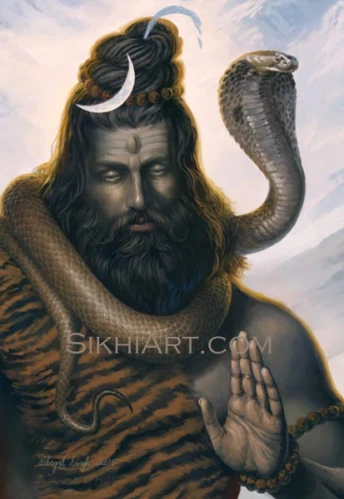“The government officials are like deer and falcons, they are known to be trained and intelligent. But their training and intelligence is actually a trap with which they trap their own kind; hereafter they will find no place of rest.”
– Guru Nanak Dev ji (Guru Granth Sahib, 1288)

Price range: $85.00 through $3,531.00Select options This product has multiple variants. The options may be chosen on the product page
Artist’s Notes

In this painting, Sant Jarnail Singh ji Bhindranwale defends against the attacks by the Indian army, who had brought in tanks in order to break through the fortifications put up by Sant Jarnail Singh ji. It was a tragic event that occured in June 1984, where many lost their lives, including the innocent pilgrims who had gathered at the temple to celebrate Guru Arjun Dev ji’s martyrdom.

Sometimes called the Akal Boonga, the Akal Takht in Amritsar, Punjab, had been built opposite to the Harimandir Sahib to hold congregations. It had become the Sikh centre of authority during the times of the sixth Guru. In those times, Akal Takht was a single-storey building that housed an eleven feet tall platform on which Guru Hari Gobind ji sat and held his court. However centuries after, under Maharaja Ranjit Singh ji, this gathering place was made into a five story tall building in the style of Mughal architecture.

In 1984, Sant ji had fortified the Akal Takht and had made it his base of operations. Feeling compelled to capture him, the Indian army attacked him at the Akal Takht. First with soldiers but when that failed they brought in a tank to blow the strong defence put up by Sant ji. The heavy fire power brutally damaged the Akal Takht, which caught in the crossfire between the two sides. It had to be rebuilt due to the heavy damage. The Indian government rebuilt the Akal Takht however tension ensued and some Sikhs demolished the structure and rebuilt it again in 1986.
[maxbutton name=”AC” url=https://www.sikhiart.com/product/prints-of-sant-jarnail-singh-ji-bhindranwale/]



